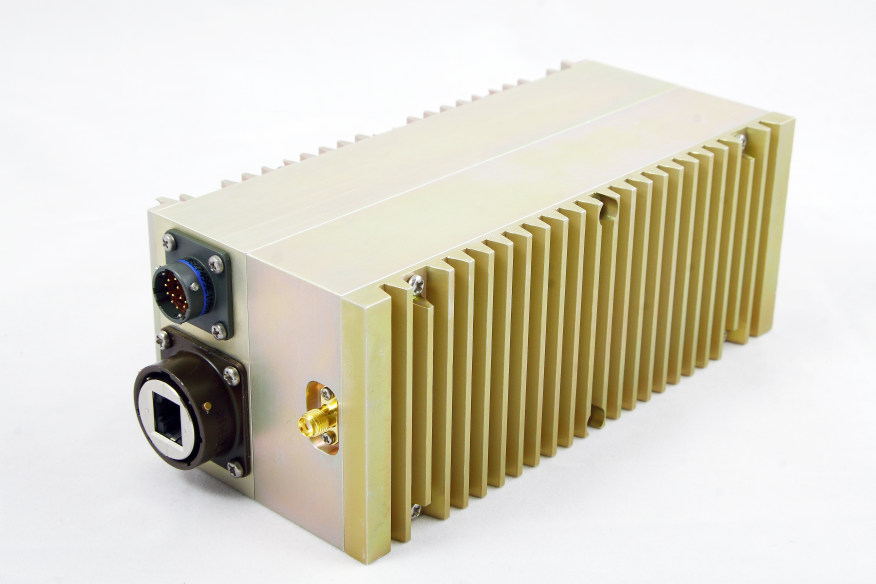
- Networked Digital Datalink Radio
| Physical Dimensions | |
| Size | 180 (l) x 85 (w) x 70 (d) mm 7.08 (l) x 3.35 (w) x 2.76 (d) in |
| Weight | 1800 g (64 oz) |
| Operating Modes | |
| Transmission | Frequency Hopping Spread Spectrum (FHSS), Direct Sequence Spread Spectrum (DSSS) |
| Access Control | Time Division Multiple Access (TDMA), Self-Organising TDMA, 500 slots |
| Interfaces | |
| Data & Control | IEEE 802.3 Ethernet (Data & Control) |
| Power Supply | 28V DC |
| Synchronization | TTL Pulse |
| Design Requirements | MIL-STD 704E |
| Connectors | |
| Ethernet | MIL-C 38999 or MIL-C26482 |
| Power & TTL | MIL-C 38999 |
| Radio Frequency | SMA |
| Tunable Range | |
| S-Band Version | 300 MHz within 2.185 GHz - 2.485 GHz in 0.5 MHz steps (Extended NATO S-Band) |
| L-Band Version | 300 MHz within 0.39 GHz -1.55 GHz in 0.5 MHz steps (Customisable) |
| Note | Solutions are available for operation in other frequency bands such as HF, VHF and UHF |
| Transmitter Section | |
| RF Power output | Maximum 23W ±10% Programmable to ½, ¼ and 1W |
| Wave shaping scheme | Direct Digital Synthesis (DDS) |
| Range | 70 nautical miles A/A (130km/80 miles) LOS (Max), without relay |
| Frequency Switching | Digital Control |
| Data Rate | 1 Mbit/sec (nominal) 5 Mbit/sec (max) |
| Receiver Section | |
| Receiver Sensitivity | <-94.5 dBm |
| Receiver Analog Bandwidth |
5 MHz |
| Receiver Architecture | Software Defined Radio |
| Tuning Method | Digital PLL tuning |
| Receiver maximum non- destructive input power |
<15 dBm |
| Tuning Step | 0.5 MHz |
| Supported Modulation | |
| Digital Modulation | Frequency shift Keying (FSK) Gaussian Minimum Shift Keying (GMSK) (Differential) Quadrate Phase Shift Keying (QPSK) Binary Phase Shift Keying (BPSK/DBPSK) |
| Analog Modulation | AM (Amplitude Modulation) FM (Frequency Modulation) |
| ECCM Features | |
| Frequency Hopping (configurable schemes), Direct Sequence Spread Spectrum (DSSS) |
|
| Others | |
| Error Correction | Turbo Coding |
| Network Capacity | Dependent on update rate |
| Environmental | |
| EMI-EMC | MIL-STD 461 E |
| Shock & Vibration | MIL-STD 810 E |
| <<Networked Digital Datalink | |

